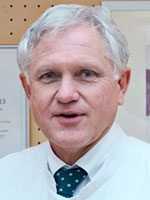All you need to now about Stomach Reduction
Stomach reduction is an umbrella term for various surgical interventions aiming to reduce weight in severely overweight (obese) patients. There are different types of operations depending on the inclusion of other organs and the effectiveness of weight loss.
Bariatric surgery (from the Greek "báros": heavy, weight) is a special field of abdominal surgery. These surgeries aim to reduce weight in severely overweight patients. The purpose of all the operations is to reduce the volume of the stomach. In addition to stomach reduction, some further interventions are carried out in the intestine area.
Studies suggest that the achieved weight reduction not only has a cosmetic effect, but also favorably impacts the entire metabolism. For this reason, the operations are now often called "metabolic surgeries".
For example, the weight reduction drastically improves blood glucose levels in many diabetics. There are also evidences of its favorable influence on other diseases associated with obesity, such as hypertension or high blood lipid levels.
An operative treatment of obesity is usually considered only if sufficient weight reduction could not be achieved with other treatment methods. Stomach reduction, like any surgical procedure, carries certain risks and is not reversible. The operation should therefore be carefully considered.
In order to perform a stomach reduction, the following criteria should be met:
- All non-operative (conservative) measures, for example, the combination of nutrition counseling, exercises and behavioral therapy, have not achieved sufficient results after six to twelve months.
- The body mass index (BMI) is over 40kg/m² or between 35 and 40kg/m² and the excess weight has caused diseases, for example, diabetes, sleep apnea, hypertension, etc.
- The patient is overweight for at least three years.
- The patient is between 18 and 65 years old. In patients over 65 years an obesity operation can only be performed in exceptional cases.
- The patient is prepared to lead an active lifestyle with a varied diet even after the operation.
The following criteria speak against stomach reduction:
- The patient is ill with cancer.
- A treatable physical disorder (for example, hypothyroidism) or mental disorder is responsible for obesity.
- The patient suffers from an untreated eating disorder.
- Too high operational risk due to poor health condition.
- Some previous operations or damage to the gastrointestinal tract can make surgery difficult or impossible.
- Dependence on alcohol, drugs and medicines.
Stomach reduction methods
Today bariatric surgery (obesity surgery) offers a number of different surgical methods to treat obesity. All interventions are carried out under general anesthesia and can almost always be performed using minimally invasive techniques (keyhole techniques, laparoscopic surgery). Minimally invasive approach means that no large abdominal cuts are necessary. Instead, the instruments are brought into the abdominal cavity through three small incisions.
A small camera with integrated light source is introduced through one of the accesses cuts, using which the surgeon can see the operating area and the introduced instruments on a screen. The keyhole technique has following advantages: less tissue injury and faster healing process. The keyhole technique is sometimes impossible, when as the result of previous operations, the so-called adhesions are formed in the abdominal cavity.
In principle, one distinguishes between the so-called restrictive and malabsorptive surgical principles:
Restrictive principle implies the reduction of the stomach capacity (gastric reduction) though the intervention. Thus the patient feels full already after small portions of food. The reduced food intake achieved this way helps to lose weight steadily. In the case of malabsorptive procedures, however, the digestive tract is surgically altered to cause a malabsorption (absorption disorder) of food. This is achieved by delaying the break down of nutrients and thus reducing the available absorption area of the gastrointestinal tract. Thus the maximum amount of nutrients that can be absorbed into the blood decreases.
Efficacy of surgical stomach reduction procedures
The different techniques vary significantly in their efficacy and the severity of the operation. Efficacy is assessed primarily by the possible weight loss, more precisely, by the achieved excessive weight loss, EWL.
It does not refer to the total weight before the intervention, but only to the amount above the normal weight BMI limit of 25 kg/m². Thus, if the excess weight loss is 50 percent, it does not mean that the whole body weight has been halved, but that half of the excess body weight is gone.
A calculation example: if a patient has a BMI of 45 kg/m² before surgery, then the EWL is 20 kg/m² above the normal weight (= a maximum of 25 kg/m²). If this patient reaches a reduction of their BMI by 10 kg/m² and achieves 35 kg/m², this corresponds to a weight loss of 50 percent of the excess weight. In contrast to efficacy, however, it is possible to make assertions about the severity of the operation. The greater was the normal anatomy altered with the procedure, the more often serious complications occur. In general, people with obesity are always confronted with increased surgical risk.
The four most common operational procedures and their effectiveness:
- Gastric banding (a purely restrictive procedure), excessive weight loss up to 50 percent
- Gastric sleeve (a purely restrictive procedure), excessive weight loss up to 60 percent
- Roux-en-Y gastric bypass (a restrictive-malabsorptive procedure), excessive weight loss 60 to 70 percent
- Biliopancreatic diversion with or without duodenal switch (a restrictive-malabsorptive procedure), excessive weight loss up to 52 or up to 72 percent
In the Roux-en-Y gastric bypass and the biliopancreatic diversion, both effective principles are combined: the stomach is reduced and the food breakdown is delayed, too. Further information on all four procedures can be found on the corresponding pages.
A non-surgical procedure, the so-called gastric balloon, is a method where a mostly liquid-filled silicone balloon partially fills the stomach. It is performed not during an operation, but during a gastroscopy and therefore in the strict sense is not an obesity surgery.

























 Loading ...
Loading ...


